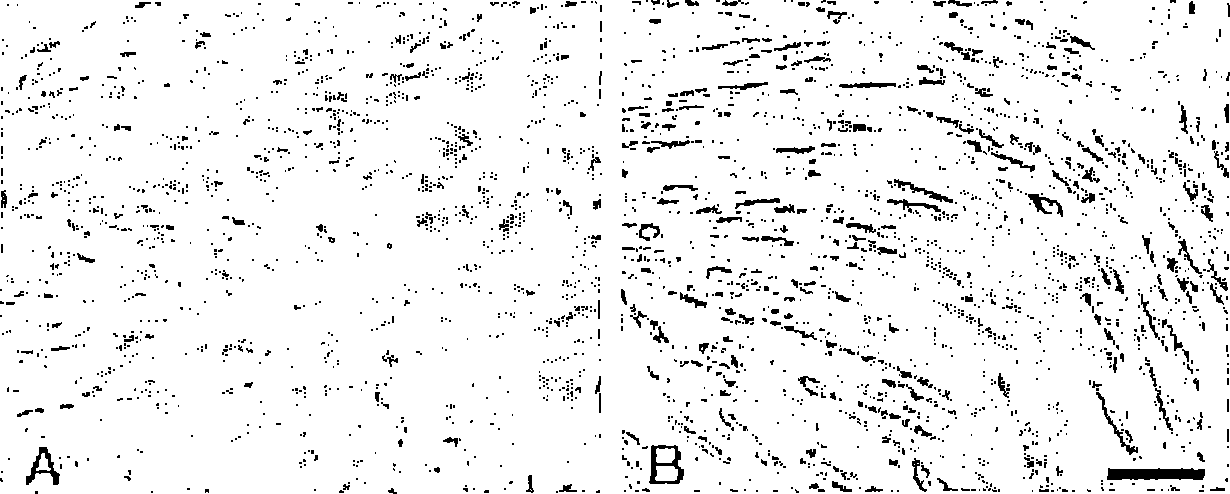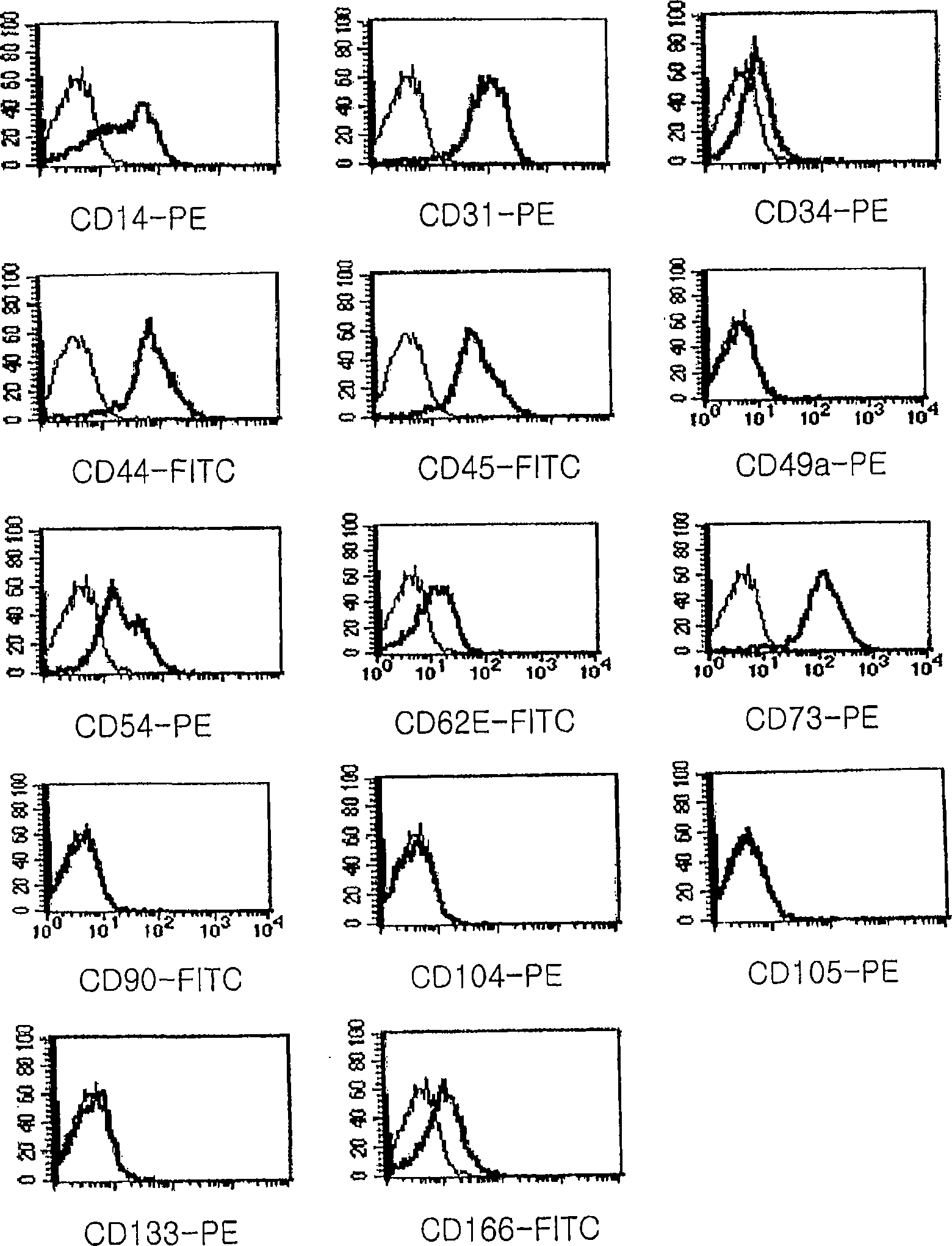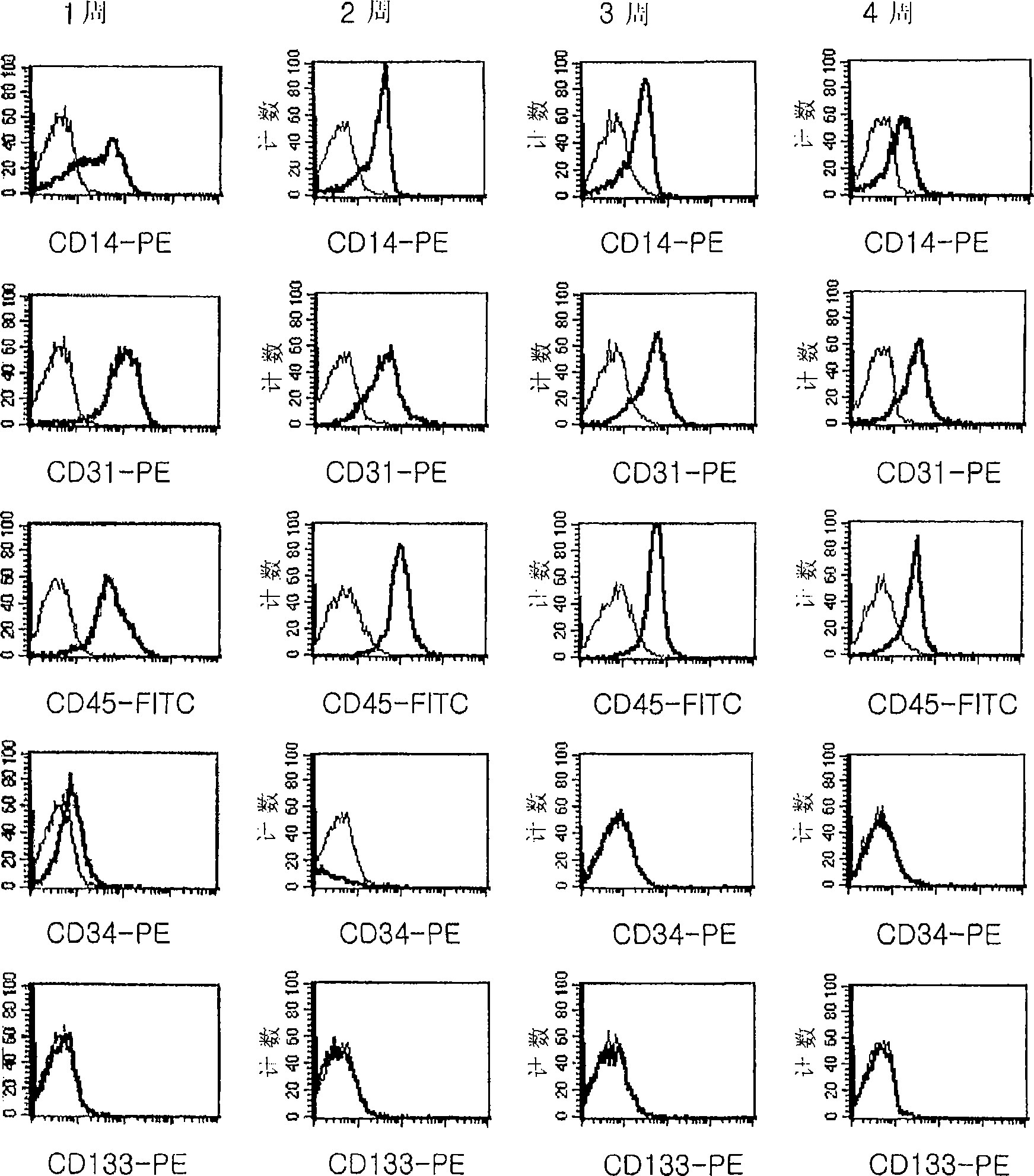Method for isolating and culturing multipotent progenitor/stem cells from umbilical cord blood and method for inducing differentiation thereof
A technology for stem cell differentiation and umbilical cord blood, which is applied in the fields of blood/immune system cells, biochemical equipment and methods, animal cells, etc.
- Summary
- Abstract
- Description
- Claims
- Application Information
AI Technical Summary
Problems solved by technology
Method used
Image
Examples
Embodiment 1
[0156] Example 1: Isolation and culture of multipotent progenitor / stem cells from mononuclear cells derived from umbilical cord blood
[0157] Preparation of mononuclear cells derived from umbilical cord blood
[0158] Before the placenta is separated from the uterus after delivery, 60-150 ml of cord blood is taken from the umbilical cord vein using a cord blood sampling bag (capacity: 175 ml) containing 23 ml of the anticoagulant CPDA-1 or a 50 ml syringe containing 5 ml of heparin. All instruments used for cord blood sampling were sterile prior to use, and the sampling site was sterilized with alcohol or betadin.
[0159]For isolation of mononuclear cells from cord blood, 15 ml of cord blood samples were dispensed into 50 ml conical tubes within 24 hours of sampling. 15 ml of phosphate buffered saline (Dulbecco's PBS; Hyclone, SH300028.03) was added to the tube and mixed with the cord blood. Gently cover the bottom of the conical tube with 15ml of Ficoll-Hypaque solution ...
Embodiment 2
[0166] Example 2: Characterization of Mononuclear Cell Multipotent Progenitor / Stem Cells Isolated and Cultured from Umbilical Cord Blood
[0167] In order to perform immunophenotyping analysis on the multipotent progenitor / stem cells prepared from the mononuclear cells derived from umbilical cord blood in Example 1, the cultured cells were treated with 0.05% trypsin solution to detach the cells from the culture flask, and washed twice with PBS Separate cells. Cells at 5 x 10 5 Cells / 200 μl were suspended in PBS, 10 μl of various antibodies were added thereto, and the culture flask was placed in a dark room for 15 minutes. Cells were then washed twice with PBS for flow cytometry (Becton Dickinson), mixed with 500 [mu]l of the same PBS, and immunophenotyped using flow cytometry (FACScan, Becton Dickinson). At this time, CD14, CD31, CD34, CD44, CD45, CD49a, CD54, CD62E, CD73, CD90, CD104 (mentioned above, BD Sciences), CD105 (Ancell Co.), CD133 ( Miltenyi Biotec) and CD166 (An...
Embodiment 3
[0172] Example 3: Differentiation of multipotent progenitor / stem cells derived from umbilical cord blood into neurons
[0173] Induction of differentiation into neurons
[0174] In order to confirm whether the multipotent progenitor / stem cells obtained in Example 1 can differentiate into various types of cells, they were treated to induce differentiation into neurons as follows. Multipotent progenitor / stem cells at 4 x 10 4 cells / cm 2 The concentration was inoculated into the animal cell medium induced to differentiate into neurons, and cultured for 1-2 weeks, wherein the differentiation induction medium was supplemented with 1% FBS, 2mM L-glutamine, 10μM retinoic acid, 10μM folskolin , 100 ng / ml NGF, 1×N2 supplement (Gibco BRL), 0.00001% β-mercaptoethanol and 100 U / ml penicillin-100 μg / ml streptomycin in HG-DMEM.
[0175] Confirm differentiation into neurons
[0176] Using an optical microscope to observe whether the multipotent progenitor / stem cells derived from umbili...
PUM
 Login to View More
Login to View More Abstract
Description
Claims
Application Information
 Login to View More
Login to View More - R&D
- Intellectual Property
- Life Sciences
- Materials
- Tech Scout
- Unparalleled Data Quality
- Higher Quality Content
- 60% Fewer Hallucinations
Browse by: Latest US Patents, China's latest patents, Technical Efficacy Thesaurus, Application Domain, Technology Topic, Popular Technical Reports.
© 2025 PatSnap. All rights reserved.Legal|Privacy policy|Modern Slavery Act Transparency Statement|Sitemap|About US| Contact US: help@patsnap.com



